Let's talk! Browse our offer and let us help you create your own budget.
Top 10 Caves in Spain
Spectacular Caves in Spain
Intense summer heat often lingers on as summer draws to a close, inspiring us to seek a little cool break from the sun. Scenic caves and grottos offer an unexpectedly refreshing itinerary option. Here’s a quick round up of Spain’s ten most attractive caves; intriguing places that have quietly awaited our presence since pre-historic times:
|
Although it's located in Zugarramurdi, Navarra, this cave is also known as the Cave of Aquelarres. It was formed by erosion from Infernuko erreka (“hell’s creek”). They say that in the Middle Ages witch gatherings were held here. Later, in the 17th century, the Spanish inquisition condemned a number of local women to burn at the stake. A series of caves makes up the area, the largest of which measures in at an impressive 100 meters long by 20 wide and 30 high. |
|
|
|
It may seem lost within farm fields, but fascinating findings here have revolutionized our knowledge of the origins of humankind. Although visitors have limited access to the sites, the Gran Dolina and the Sima de los huesos (pit of bones) attract history buffs and curious observers alike. Just a few kilometers away in the city of Burgos, the Museum of Evolution offers a clear image of this unique attraction. |
|
|
|
Santilana del Mar is a beautiful town in Cantabria that has maintained a certain medieval appeal. It’s also home to what many call the Sistine Chapel of cave painting: The Cave of Altamira. The prehistoric artwork has been amazing observers since its discovery in 1868. The site remained closed to visitors for years, but an exact replica was created nearby, where you can behold the beauty of the original paintings without damaging their delicate surroundings. |
|
|
|
This scenic park is located just a few kilometers from Lake Banyoles in Girona (northern Catalonia). It’s been officially accredited in Spain as a cultural asset of national value, a place where you can check out three archeological sites in three different caves: Arbreda, Mollet, and Reclau Viver. A tour of the site wraps up with an engaging audiovisual presentation. Visitors can also practice archery, learn to build a fire, craft tools, and paint their own paintings just as cave dwellers did in prehistoric times. |
|
|
|
The town of Aracena (pop. 7,000) in the province of Huelva sits on the border of Portugal. Aracena is quite beautiful in itself given its mountain scenery, but the town’s subterranean landscapes are its real attraction. The Gruta de las Maravillas (the grotto of wonders) is an enormous network of caverns produced by erosion that displays an indescribable panorama of stalactites, stalagmites, columns, and other curious formations. Back in 1914, this became Spain’s very first cave to be opened as a tourist attraction, and this year it’s celebrating its 100 year anniversary. Temperatures in the grotto oscillate between 60 and 67 degrees Fahrenheit (16 to 19 Celcius) and the humidity level is about 100%. |
|
|
|
Discovered in 1959, the Nerja Caves, are located in the popular tourist municipality of Nerja. Prehistoric paintings of seals found in the caves greatly predate other images found here of horses, sheep, goats, and other animals. A slow but constant water trickle produced the stunning cave forms and spacious galleries that make this a must visit attraction for anyone who goes to the coast of Malaga. The caves are so big that an auditorium was built in their interior that has become a popular music venue given its special acoustic quality; it’s just one more element that adds to the aesthetic beauty of the caves. |
|
|
|
Elsewhere in Malaga, another cave holds the distinction of being Europe’s only known cave with underwater origins, and there are only two others like it in the world. We’re talking about the Cueva del Tesoro (Cave of the Treasure), created by the sea during the Jurassic period. The cave owes its name to a legend that claims that an Almoravid dynasty monarch hid an incredible treasure within its walls; it has yet to be found. The unique formations carved out by the sea make this a particularly appealing cave to explore. |
|
|
|
Heading eastward to the island of Mallorca, we come to the Caves of Drach. They happen to be located in Manacor, the hometown of tennis star Rafa Nadal. The four caverns that make up the Caves of Drach are located some 25 meters beneath the surface of the ground. They stretch a total of two and a half kilometers in length and they even contain a 30 by 110 meter lake. Martel Lake is used as a classical music venue and tourists can cross it by boat. |
|
|
|
The Canary Island of Lanzarote features a wonderful example of art designed in harmony with nature. Los Jameos del Agua are the brainchild of local artist César Manrique. Jameos are produced with the collapse of volcanic tube ceilings, which are large lava bubbles with a small opening in their top. Los Jameos del Agua are the artist’s dream come true: to create a work that looks so natural that you don’t notice any trace of human interference. A curious breed of albino blind crab, endemic to the area, makes a home within this unique cave landscape that has been enhanced by an artistic genius. |
|
|
|
Icod de los Vinos is a municipality on the north side of the Canary island of Tenerife. It’s a place where visitors may venture into the interior of a volcano. The cave of wind is a volcanic tube formed by lava that has flowed from the crater. Extending over 17 kilometers in length, this is one of the largest caves of its kind. Knowledgeable guides with a special passion for this unique atmosphere offer engaging tours complete with intriguing info on the cave’s geological and biological features (visitors may only enter the cave with a tour guide). Fifteen new species have been discovered here, all of which are troglofauna –animals that can only live in underground environments. |

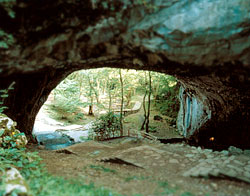 1. The Cave of Zugarramurdi
1. The Cave of Zugarramurdi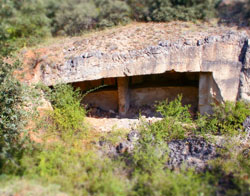 2. Atapuerca Archeological Site
2. Atapuerca Archeological Site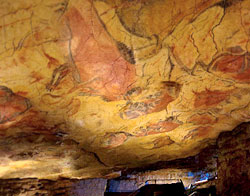 3. The Cave of Altamira
3. The Cave of Altamira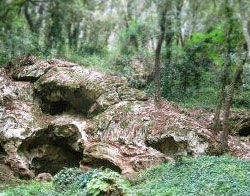 4. Serinyà Prehistoric Cave Park
4. Serinyà Prehistoric Cave Park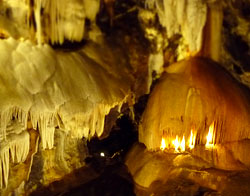 5. Gruta de las Maravillas (The grotto of wonders)
5. Gruta de las Maravillas (The grotto of wonders)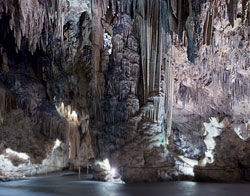 6. Nerja Caves
6. Nerja Caves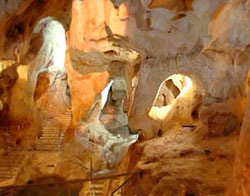 7. Cueva del Tesoro (Cave of the treasure)
7. Cueva del Tesoro (Cave of the treasure)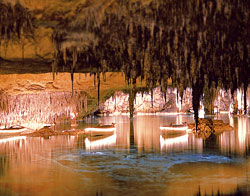 8. Caves of Drach
8. Caves of Drach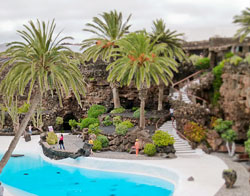 9. Los Jameos del Agua
9. Los Jameos del Agua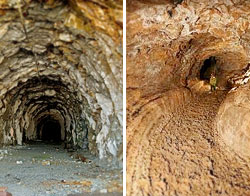 10. La Cueva del Viento (The Cave of Wind)
10. La Cueva del Viento (The Cave of Wind)